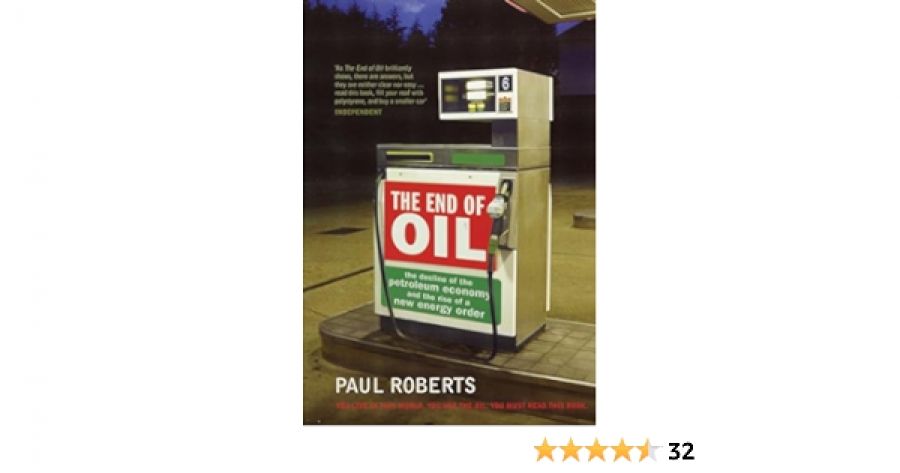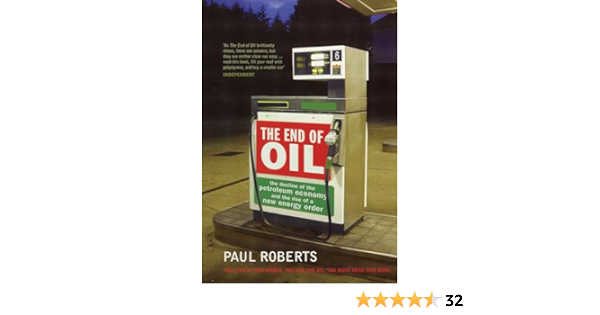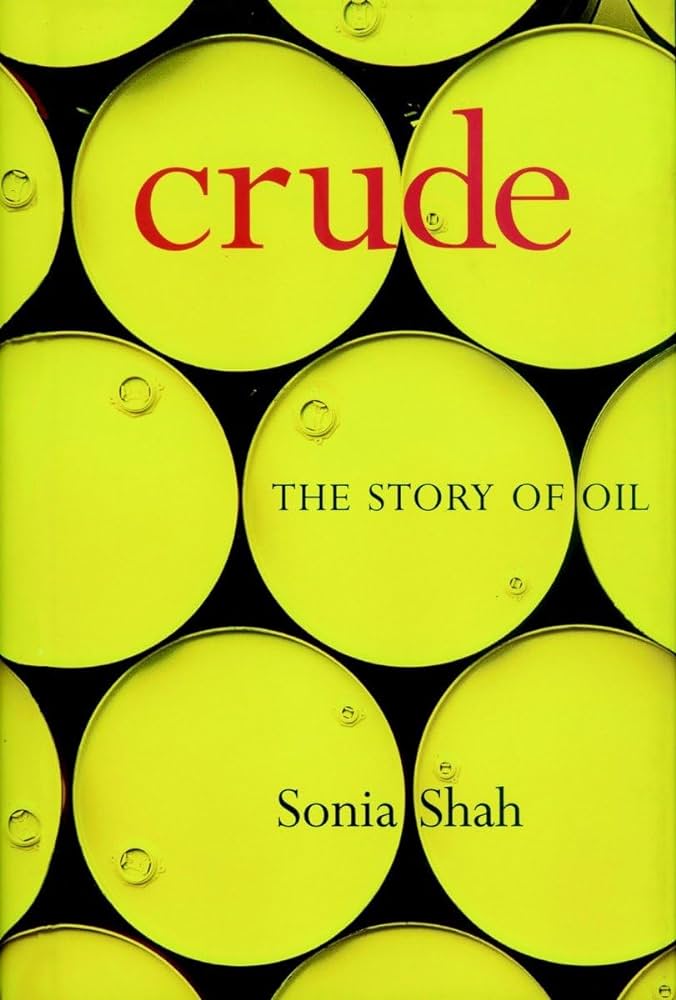
- Free Article: No
- Contents Category: Non-fiction
- Review Article: Yes
- Article Title: Oily death throes
- Online Only: No
- Custom Highlight Text:
The experts may prognosticate, but reality makes fools of them, too. Paul Roberts, in The End of Oil: The Decline of the Petroleum Economy and the Rise of a New Energy Order, reviews several scenarios for the future of oil that were advanced in late 2002 by the US National Intelligence Council. The two most bleak ones had the price of oil reaching US$50 a barrel, the first sometime between 2010 and 2015, the second somewhat earlier, following convulsions in the Middle East. As we know, US$50 was reached only a few months after The End of Oil was published in the US; at the time of writing, the price is around US$60 a barrel. Reading these two books confirms the certainty, speed and completeness of change. The unknowable for oil is: when?
- Book 1 Title: The End of Oil
- Book 1 Subtitle: The decline of the petroleum economy and the rise of a new energy order
- Book 1 Biblio: Bloomsbury, $35 pb, 389 pp
- Book 1 Cover Small (400 x 600):

- Book 1 Cover (800 x 1200):

- Book 2 Title: Crude
- Book 2 Subtitle: The story of oil
- Book 2 Biblio: Allen & Unwin, $24.95 pb, 231 pp
- Book 2 Cover Small (400 x 600):

- Book 2 Cover (800 x 1200):

Sonia Shah, the author of Crude: The Story of Oil, is an exuberant Jeremiah. Change, when it happens, will reveal our suburban tranquility to have been a delusional fantasy. She says, taking the long view, that our way of life – the ‘petrolife’ – is but a passing aberration.
She has company. Another author, excerpted on the Internet, is James Kunstler. He foreshadows ‘the converging catastrophes of the twenty-first century’. As transport fuels become all but unaffordable, the suburban sprawl will be revealed as the ‘greatest misallocation of resources in the history of the world’. Large-scale agriculture, dependent on oil-based fertiliser, will disappear. International travel will return to the preserve of the rich. Our economic interdependence will no longer be global, but local. We will revert to smallish, urban communities, supplied with food from nearby. One is reminded of the old Stan Cross cartoon: ‘For gorsake stop laughing – this is serious!’
The problem starts not when oil runs out – it will never run out – but when world production peaks. Thereafter, extraction will decline relentlessly, if not steadily, and will no longer satisfy growing demand, including demand from the new growth economies of China and India. Peak-oil pessimists argue that there are no undiscovered Saudi Arabias, and there is no technology that will enable existing fields to be depleted more rapidly or more thoroughly. New oil fields will be found, and many existing fields have not had the latest technology applied to them. But these will not compensate. In short, being willing to pay more will not call forth more oil as its supply will be constrained by geology and by the limits of technology. At some point, more energy is used to extract oil than is actually contained in it.
These arguments are all contestable. It all boils down to the timing of the peak. Some say it has already occurred; others spin it out for fifty years, or a century. Optimists have a point. Reserve estimates are difficult to verify independently, and their owners may have good reasons for understating them. Also, innovation in recent decades has lifted average oil recovery rates from twenty per cent to thirty-five per cent. On past performance, why shouldn’t it lift recovery rates even further? Moreover, there has been little exploration in the OPEC countries or in Russia. Finally, there are unconventional sources of oil such as the Alberta oil sands and oil shale in Colorado and Queensland. As one industry consultant put it: ‘The truth is, I don’t know whether we’re resource-constrained or effort-constrained (not enough investment), and neither does anybody else.’
Meanwhile, today’s supply capacity, refining capacity and demand are so matched as to leave little wriggle room. This increases price volatility; a price of US$100 a barrel or more in the next couple of years is entirely possible. Yet Americans, accounting for twenty-five per cent of world oil consumption, need only adjust their thermostats for prices to drop. In the medium term, US domestic politics willing, there are proven conservation methods, such as the adoption of more fuel-efficient vehicles. Such measures would result in lower oil prices for a time. Inexorably, however, the peak will be reached, with its accompanying long-term consequences.
Sonia Shah, in Crude: The Story of Oil, surveys the scene from oil’s geological origins to the present day. Since oil’s commercialisation in the nineteenth century, the story has been one of greed, plunder, and violation of the environment. The depredations of Standard Oil in the late nineteenth century have their parallels in the twenty-first. She gives a shocking account of oil extraction in the Niger delta – its destruction of the environment and the livelihood of the local Ogoni people. The last chapter of her book is suitably entitled ‘Death throes’.
Shah’s style is colourful and her metaphors prolific, but her message is rather grim, and she may put off technology enthusiasts, who have an instinctive affinity for big boys’ toys such as ocean-going oil rigs. It is always hard to know how to deal with human ingenuity. For, if there is to be a positive future, technology and its enthusiasts will play a central role. Shah’s technology glass is definitely half empty. Nevertheless, one’s spirits are comforted by her acknowledgments page. She dedicates the book to her young sons, in hope that they will live in a safe, fair, happy world full of whizzing bicycles.
Roberts provides a lengthy and sober survey. His book is in three parts: how energy has become so vital to our lives; the intricate arrangements we have for using it; and the promise and peril of the future. He is good on opportunities and constraints during the transition to a world beyond oil. Hydrogen is a promising option. Vehicles are fitted with hydrogen-consuming fuel cells. Initially, the hydrogen is generated from natural gas, later from electrolysis. An intricate system evolves for both stationary power generation and fuel for vehicles. Hydrogen has the advantage of not generating carbon emissions, and it is clear that any end-of-oil scenario will be governed by responses to global warming.
The new and the possible always jockey for supremacy over the existing and the practical. This is a huge issue given the massive integrated, only partly depreciated assets that support oil and its applications. Generations of innovation and investment have brought this infrastructure to a high pitch of efficiency. Renewable energy – wind power, solar, tidal – is more costly than traditional forms. For transport, there is no easy economic successor to the internal combustion engine.
Further, owners of assets will exploit them even if only their variable costs are covered. Yet proponents of new technologies need to cover both capital and variable costs. This makes it difficult for any new technology to get over the line. Roberts calls the problem ‘asset inertia’. When it comes to replacing oil, intervention will likely be necessary, such as research and development support, but also, most importantly, arrangements that ensure energy sources bear the full cost of their impact. He quotes research suggesting that were environmental and health costs of gasoline factored into its price, even now vehicles powered by fuel cells using hydrogen would be twenty-five per cent cheaper than conventional counterparts.
Far-sightedness is revealed as a crucial corporate virtue. Toyota, the world leader in fuel-efficient alternatives to conventional vehicles, is the most profitable car company in the world. General Motors, its rival, edges towards bankruptcy or dismemberment, still dependent on a ‘gas guzzling’ fleet whose signature model is the now out-of-favour Hummer. So a successful transition relies on ingenuity, government oversight and the market. The main risk is geopolitical, the temptation to secure access to diminishing supplies through force. Both authors raise the possibility of apocalyptic outcomes.
These books are worth reading and complement each other. Whereas Roberts is sober, Shah is sobering. It is a pity that they are so late in being published in Australia, as they are now but two among many. Yet their arguments remain timely and relevant. For contemporary issues such as the end of oil, there is an inexhaustible supply of up-to-date, authoritative material on the Internet. Both books list Internet references. It is not clear how much deeper they might have gone. What seems likely is that over the next few years such books will increasingly be designed with Internet interaction in mind.


Comments powered by CComment